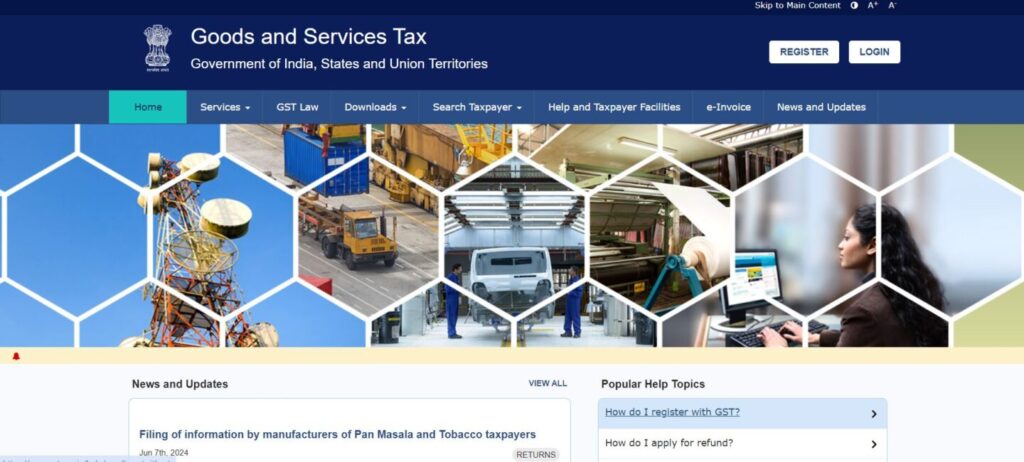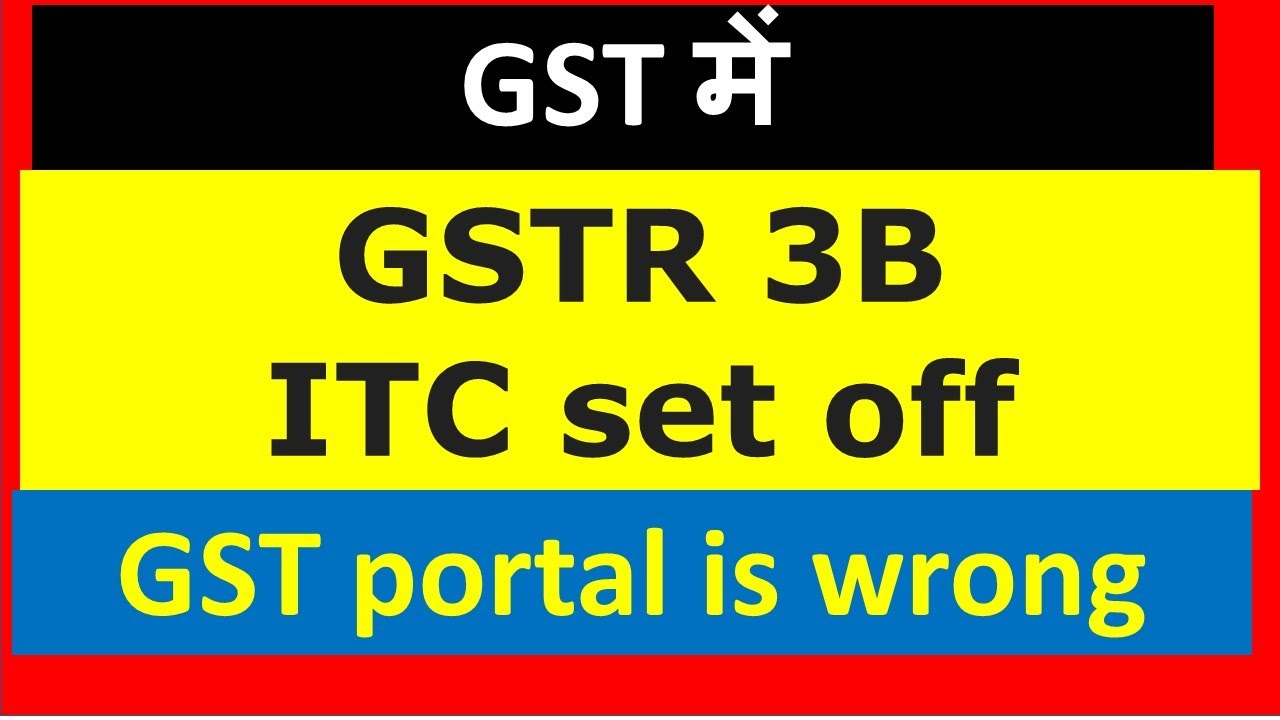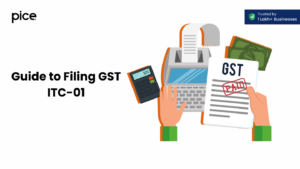How to Offset GST Liability in GSTR-3B
- 23 Aug 24
- 9 mins

How to Offset GST Liability in GSTR-3B
Key Takeaways
- Filing GSTR-3B accurately and timely on the GST portal ensures compliance and avoids penalties for default payment.
- The GST credit offset process allows businesses to use available ITC to minimize their tax liabilities effectively.
- Setting up proper rules for offsetting ITC ensures that IGST, CGST, and SGST liabilities are accurately managed and paid.
- Maintaining an updated credit ledger and accurate outward supply details are crucial for proper offsetting and distribution of ITC.
- Regular reconciliation and timely vendor payments help optimize ITC claims and ensure accurate monthly tax payments.
Guide to File GSTR-3B on GST Portal

Filing GSTR-3B on the GST portal is an essential monthly task for all GST-registered businesses to ensure compliance. The process involves reporting outward supplies, claiming input tax credit (ITC), and declaring tax liabilities for the current tax period. Here’s a step-by-step guide to filing GSTR-3B:
- Log In to the GST Portal: Visit the GST portal and log in with your credentials, including GSTIN, username, and password. Ensure your credentials are secure to prevent unauthorized access.
- Navigate to the Returns Dashboard: Once logged in, go to the 'Services' tab, select 'Returns', and then 'Returns Dashboard'. This section allows you to select the appropriate return period and form type.
- Select the Return Period: Choose the relevant financial year and the current tax period for which you need to file the return. Accurate selection of the period ensures that your tax liabilities are reported correctly.
- Fill in the GSTR-3B Form:
- Outward Supplies: Enter details of all outward supplies, including interstate supplies and supplies to unregistered persons. Accurate reporting of outward supply details is crucial for calculating the correct tax payable.
- Input Tax Credit (ITC): Enter details of ITC available from purchases and expenses, including IGST ITC and CGST ITC. Ensure that ITC claims are valid and supported by proper documentation.
- Tax Liability: Calculate the total tax liability, including IGST liability and CGST liability. Ensure the accuracy of GST liability calculations to avoid discrepancies.
- Review and Submit: Verify all the entered details to ensure accuracy. Once satisfied, click on 'Save' and then 'Submit'. Submitting the form freezes the data and no further changes can be made.
- Make GST Payment: Proceed to make the GST payment using available payment modes such as net banking, debit/credit card, or through the cash ledger. Ensure the complete payment of taxes to avoid any penalties for default payment.
- File Return: After making the payment, file the return using DSC (Digital Signature Certificate) or EVC (Electronic Verification Code) for authentication.
- Download Acknowledgment: After successful filing, download the acknowledgment receipt for your records. This document serves as proof of filing and is essential for audit and compliance purposes.
💡If you want to pay your GST with Credit Card, then download Pice Business Payment App. Pice is the one stop app for all paying all your business expenses
Filing GSTR-3B accurately and timely ensures compliance with GST laws and helps avoid penalties for default payment.
Understanding the GST Credit Offset Process
The GST credit offset process allows businesses to use their available ITC to reduce their overall tax liability. This ensures efficient use of credit and minimizes cash outflow. Here’s how the GST credit offset process works:
- Identify Tax Heads:
- GST includes different types of taxes: IGST (Integrated GST), CGST (Central GST), and SGST (State GST). Each GST type has specific rules for offsetting ITC.
- Understanding the different tax heads and their respective liabilities is crucial for applying the ITC correctly.
- Calculate Output Tax and ITC:
- Determine the output tax based on outward supplies, including interstate supplies and supplies to unregistered persons.
- Calculate the available ITC from purchases and expenses, ensuring all claims are valid and documented in the credit ledger.
- Apply Offset Rules:
- According to GST offset rules, IGST ITC must be applied first to offset IGST liability, followed by CGST liability and SGST liability.
- CGST ITC can only be used to offset CGST liability, and SGST ITC can only be used to offset SGST liability.
- Offsetting Excess Liability:
- In cases where the ITC is insufficient to cover the entire tax liability, the remaining amount must be paid in cash to complete payment.
- Regularly monitor liability amounts to ensure timely and accurate payment of taxes.
- Monitor Balance Liability:
- Regularly monitor the balance liability to ensure that all tax liabilities are accurately offset and paid.
- Proper management of ITC and tax payments helps avoid unnecessary penalties and ensures compliance.
Understanding and applying the GST credit offset process correctly helps businesses manage their tax liabilities efficiently and ensures compliance with GST regulations.
Setting Up Rules to Offset the GST ITC
Applying the correct offset rules is essential for ensuring accurate GST compliance. Here are the key rules for offsetting ITC:
- Prioritize IGST ITC:
- Use IGST ITC to offset IGST liability first. This is because IGST is a combination of both central and state taxes.
- After offsetting IGST liability, any remaining IGST ITC can be used to offset CGST liability and SGST liability in that order.
- Offset CGST ITC:
- CGST ITC should be used to offset CGST liability. This ensures that the central tax portion is covered.
- CGST ITC cannot be used to offset SGST liability, so ensure that it is fully utilized against CGST liability.
- Offset SGST ITC:
- SGST ITC is used to offset SGST liability. This is the state tax portion and must be handled separately.
- Like CGST, SGST ITC cannot be used to offset CGST liability.
- Address Excess ITC:
- If there is excess ITC that cannot be offset against the current liabilities, it can be carried forward to the next return period.
- Ensure accurate documentation of excess ITC for future use.
- Monitor ITC Usage:
- Regularly review ITC usage to ensure compliance with GST rules.
- Keep detailed records of ITC claims and offsets to support your tax filings.
By setting up these rules, businesses can effectively manage their GST ITC and ensure that their tax liabilities are minimized.
Offsetting and Distributing ITC
Proper offsetting and distribution of ITC ensure that tax liabilities are minimized and excess credits are utilized effectively. Here’s a detailed guide:
Prerequisites
- Accurate Outward Supply Details:
- Ensure that all outward supply details, including taxable supplies and interstate supplies, are correctly reported.
- Proper documentation and accurate data entry are crucial for calculating the correct tax liability.
- Updated Credit Ledger:
- Maintain an updated credit ledger with all ITC claims recorded accurately.
- Regular reconciliation of the credit ledger with actual transactions helps prevent discrepancies.
- Understanding of Reverse Charge Liabilities:
- Include reverse charge liabilities in your calculations as they impact the overall tax payable.
- Ensure that reverse charge liabilities are accurately reported and paid.
Offsetting the ITC Against the Liability
- Calculate Total Tax Liability:
- Determine the total tax liability, including IGST, CGST, and SGST liabilities.
- Ensure that all liability amounts are accurately calculated and documented.
- Apply ITC:
- Offset IGST ITC first against IGST liability, then CGST liability, and finally SGST liability.
- Use CGST ITC to offset CGST liability and SGST ITC to offset SGST liability.
- Address Excess Liability:
- If there is an excess liability after applying ITC, ensure that the complete payment of the remaining liability is made through available cash balances.
- Avoid default payment by making timely and accurate payments.
- Submit and Track:
- Submit the return and track the return status to ensure that the payment is processed and the return is filed correctly.
- Regularly monitor the balance liability to ensure ongoing compliance.
Proper offsetting and distribution of ITC help businesses manage their GST liabilities efficiently and maintain compliance with GST regulations. By following these steps, businesses can ensure accurate and timely filing of their GSTR-3B returns.




















